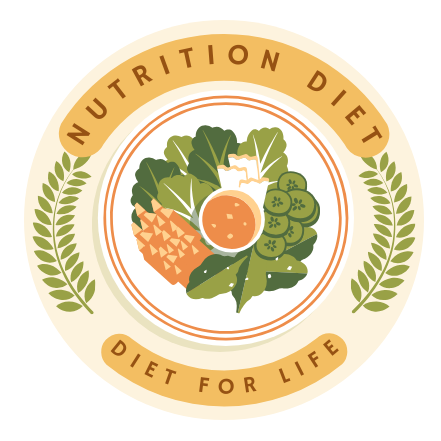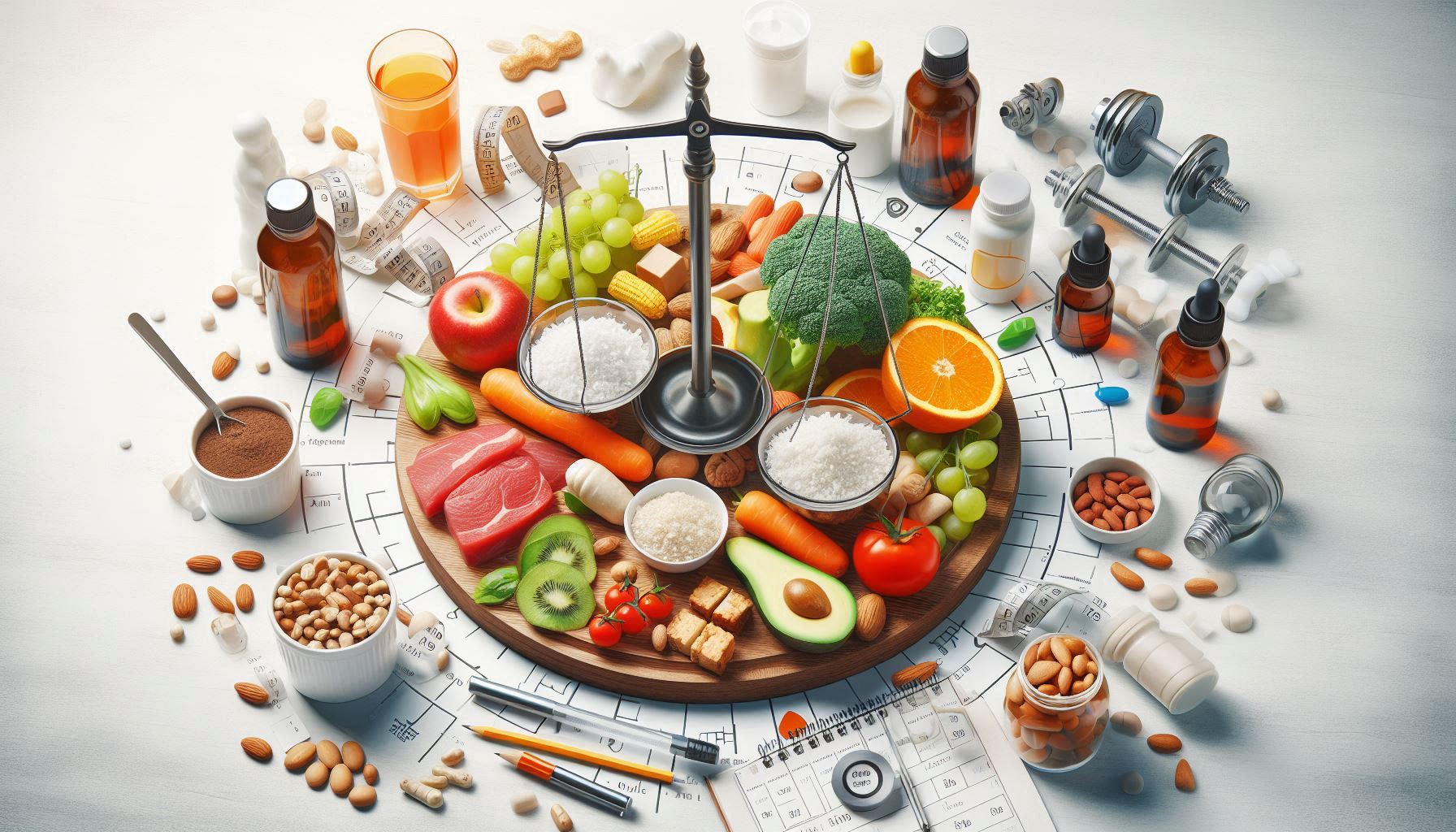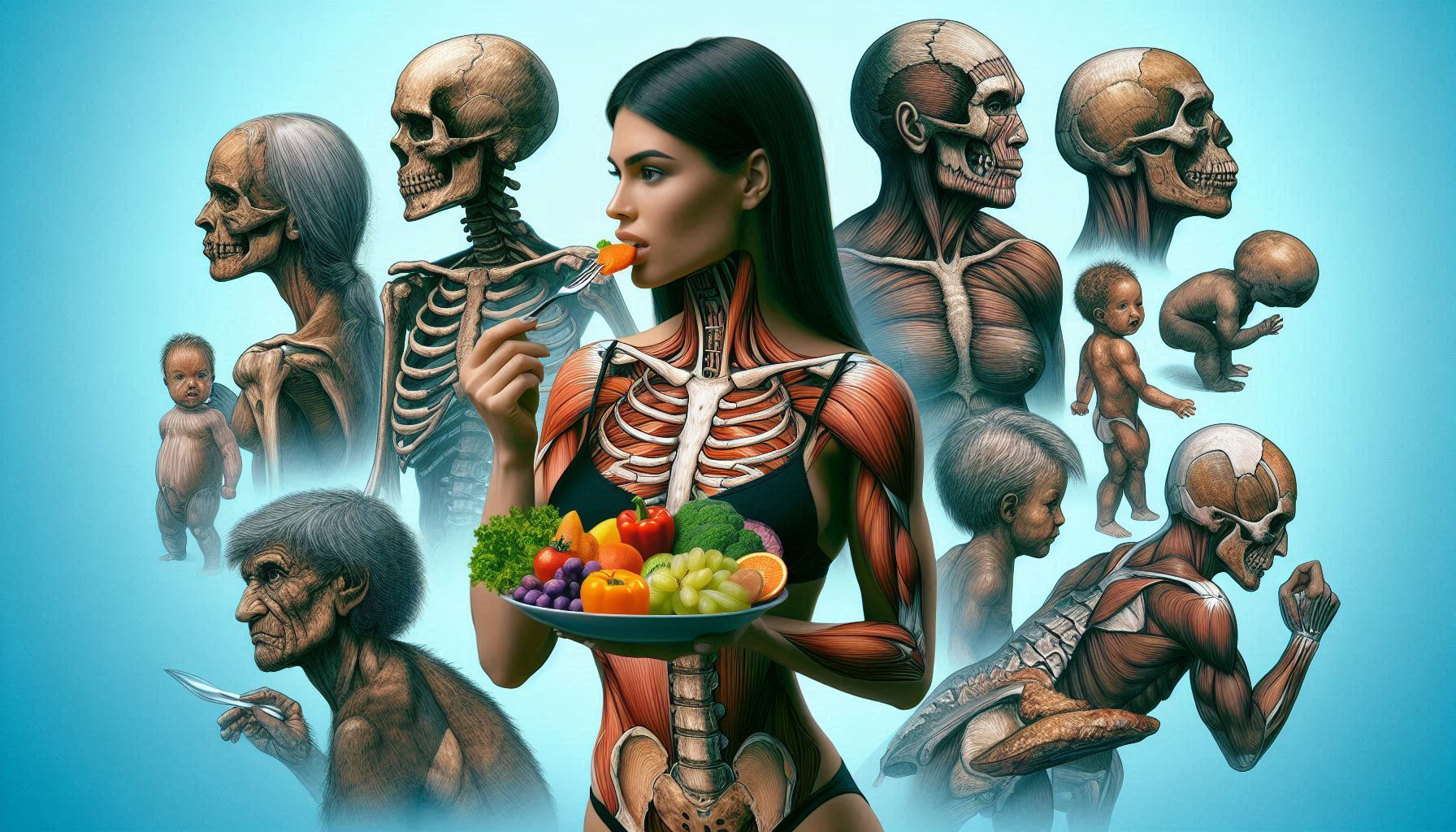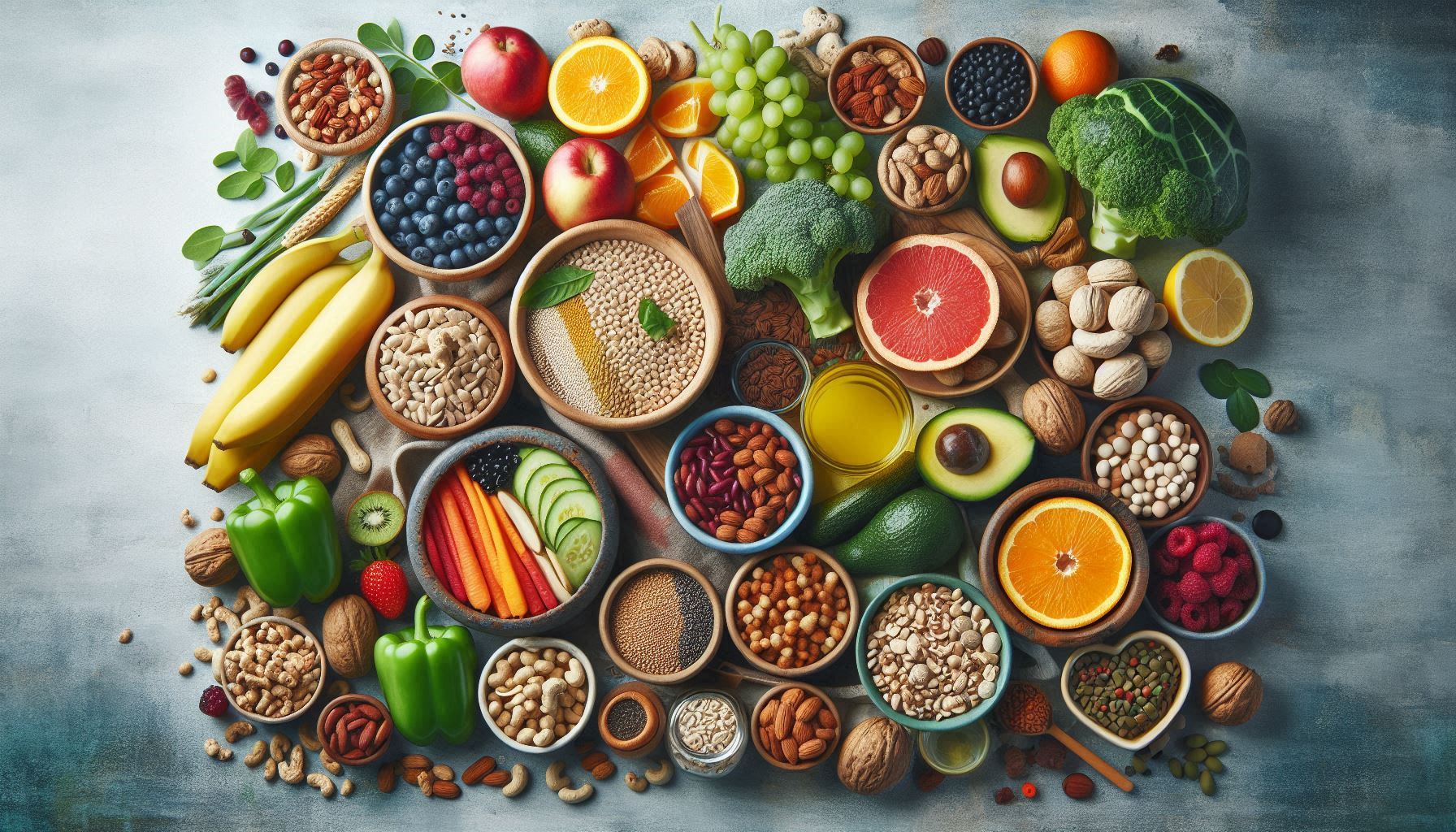Macronutrients are essential nutrients that the body needs in large amounts to function properly. These nutrients are responsible for providing energy, supporting bodily functions, and promoting growth and repair. The three primary macronutrients protein, carbohydrates, and fats play distinct roles in our health. Understanding their functions, sources, and how to balance them in your diet can help you achieve optimal health, physical performance, and well-being.
This article delves into the science of macronutrients, exploring their biological functions, their impact on health, and the best ways to balance them for different goals. Whether you are an athlete, someone looking to improve your overall health, or simply curious about nutrition, this guide will provide a thorough understanding of these vital nutrients.
The Role of Protein in Health and Performance
What is Protein?
Protein is one of the three macronutrients that provide energy to the body, but its primary role extends far beyond that. Composed of long chains of amino acids, protein serves as the fundamental building block for the cells, tissues, enzymes, and hormones that make up the human body. The body uses proteins to build and repair tissues, produce enzymes and hormones, and support immune function, among other essential roles.
Proteins are made up of 20 amino acids, nine of which are classified as essential because the body cannot synthesize them. These must be obtained through the diet. The remaining 11 amino acids are non-essential, meaning the body can produce them on its own.
Functions of Protein
- Muscle Growth and Repair Protein is crucial for muscle growth and repair. During physical activity, muscle fibers undergo stress and small tears. Consuming protein provides the necessary amino acids to repair and rebuild muscle tissue. This is why athletes and bodybuilders often focus on protein intake for recovery and performance optimization.
- Enzyme and Hormone Production Many enzymes, which are proteins, act as catalysts to speed up chemical reactions in the body. These reactions are involved in digestion, metabolism, and cellular processes. For instance, insulin, a hormone that regulates blood sugar, is made from amino acids.
- Immune Function Antibodies are specialized proteins that help the body defend against harmful pathogens like bacteria and viruses. Protein also supports the production of immune cells that play a key role in the body’s defense mechanisms.
- Cellular Repair and Maintenance Protein is required for the repair and regeneration of cells throughout the body. This includes not only muscle cells but also skin cells, red blood cells, and even cells in your organs.
- Structural Support Structural proteins like collagen provide support to tissues such as skin, tendons, and bones. Collagen, for example, gives the skin its elasticity and supports joint health.
Protein Requirements
The amount of protein a person needs depends on several factors, including age, gender, physical activity level, and overall health status. The Recommended Dietary Allowance (RDA) for protein is set at 0.8 grams per kilogram of body weight for the average adult. This amount is generally sufficient to meet the needs of sedentary individuals.
However, for athletes or individuals engaging in intense exercise or strength training, protein requirements are typically higher. Active individuals or those aiming to build muscle may require anywhere from 1.2 to 2.0 grams of protein per kilogram of body weight per day.
Sources of Protein
- Animal-Based Proteins Animal products are complete proteins, meaning they contain all nine essential amino acids. High-quality animal-based proteins are found in:
- Meat (beef, chicken, pork, lamb)
- Fish (salmon, tuna, mackerel)
- Eggs
- Dairy (milk, cheese, yogurt)
- Plant-Based Proteins Plant-based proteins are generally not complete proteins, meaning they may lack one or more essential amino acids. However, by consuming a varied diet with a range of plant proteins, you can ensure you’re getting all the necessary amino acids. Sources of plant-based proteins include:
- Legumes (lentils, chickpeas, black beans)
- Tofu and Tempeh
- Quinoa
- Nuts and seeds (almonds, peanuts, chia seeds)
Balancing Protein in Your Diet
To ensure adequate protein intake, it’s important to balance protein across your meals. Most people can meet their daily protein requirements through whole food sources, but supplements like whey protein or plant-based protein powders can also be used for convenience, especially after workouts. As a general rule of thumb, aim for 20-30 grams of protein per meal, which is usually enough to stimulate muscle protein synthesis and meet your needs.
Carbohydrates – The Body’s Main Energy Source
What Are Carbohydrates?
Carbohydrates are organic compounds composed of carbon, hydrogen, and oxygen. They are the body’s preferred source of energy and are broken down into glucose, which is used by cells to produce ATP (adenosine triphosphate), the energy currency of the body.
There are three main types of carbohydrates:
- Simple Carbohydrates – These are sugars that are quickly digested and absorbed by the body. They are found in foods like fruit (fructose), table sugar (sucrose), and milk (lactose).
- Complex Carbohydrates – These are made up of longer chains of sugar molecules and take longer to digest. They provide a slow, steady release of glucose. Sources of complex carbs include whole grains, vegetables, and legumes.
- Fiber – A type of carbohydrate that the body cannot digest. While fiber doesn’t provide calories, it plays an important role in digestive health, regulating blood sugar, and supporting satiety.
Functions of Carbohydrates
- Primary Energy Source Carbohydrates are the body’s most readily available source of energy. Glucose from carbohydrates is essential for fueling the brain, muscles, and other tissues. During intense physical activity, the body relies on stored glycogen (the storage form of glucose) in the liver and muscles to provide energy.
- Regulation of Blood Sugar When carbohydrates are consumed, they are converted to glucose, which enters the bloodstream. The body uses insulin to regulate blood sugar levels. A steady supply of glucose helps to maintain normal blood sugar levels and avoid extreme highs or lows.
- Muscle Glycogen Storage Athletes and those engaged in endurance sports rely heavily on muscle glycogen. During prolonged activity, glycogen is the body’s primary energy source. Adequate carbohydrate intake ensures that glycogen stores are replenished after exercise.
- Fiber for Digestive Health Fiber, a type of carbohydrate found in plant-based foods, promotes healthy digestion. Soluble fiber helps regulate blood sugar and cholesterol, while insoluble fiber aids in bowel regularity by adding bulk to stool.
Carbohydrate Requirements
Carbohydrates should make up the majority of your daily calorie intake. The Institute of Medicine recommends that 45-65% of total calories come from carbohydrates. This range allows for flexibility in meeting energy needs while maintaining a balanced diet.
For an average 2,000-calorie diet, this translates to:
- 225 to 325 grams of carbohydrates per day
Athletes or individuals with high-intensity training regimens may need more carbohydrates to support their increased energy demands. Consuming carbohydrates before, during, and after exercise can help optimize performance and recovery.
Types of Carbohydrates and Their Impact on Health
- Simple vs. Complex Carbs While both simple and complex carbohydrates provide energy, the key difference is in how quickly they are digested. Simple carbohydrates, such as those found in candy, sugary drinks, and baked goods, are digested rapidly, leading to spikes in blood sugar levels. Complex carbohydrates, found in whole grains and vegetables, are digested more slowly and provide a steadier source of energy.
- Glycemic Index (GI) The glycemic index is a measure of how quickly a carbohydrate-containing food raises blood sugar. Foods with a high GI (e.g., white bread, sugary cereals) cause rapid spikes in blood sugar, while low-GI foods (e.g., brown rice, lentils) provide more sustained energy.
Sources of Carbohydrates
- Fruits: Apples, bananas, berries, oranges
- Vegetables: Leafy greens, sweet potatoes, carrots, squash
- Whole Grains: Brown rice, quinoa, oats, whole wheat pasta
- Legumes and Beans: Lentils, black beans, chickpeas, peas
- Nuts and Seeds: Almonds, chia seeds, flaxseeds
Balancing Carbohydrates in Your Diet
While carbohydrates are essential, it’s important to focus on quality over quantity. Opt for whole food sources of complex carbohydrates and limit the intake of highly processed foods containing simple sugars. Whole grains, legumes, fruits, and vegetables are nutrient-dense sources that provide fiber, vitamins, and minerals, in addition to energy.
Fats – Essential for Hormonal Balance and Cellular Health
What Are Fats?
Fats, also known as lipids, are an essential macronutrient that provides a dense source of energy. Fats play a crucial role in maintaining the structure of cell membranes, absorbing fat-soluble vitamins (A, D, E, K), and supporting hormonal health. While fat has often been vilified in the past due to its high calorie content, it is, in fact, essential for optimal health.
Fats are divided into three main categories:
- Saturated Fats: Saturated fats are a type of fat typically found in animal products and some plant oils, known for raising LDL (“bad”) cholesterol levels when consumed in excess.
- Unsaturated Fats: Unsaturated fats, including monounsaturated and polyunsaturated fats, are healthy fats found in foods like olive oil, avocados, and fatty fish, known for improving heart health and reducing inflammation.
- Trans Fats: Trans fats are artificial fats found in processed foods that raise LDL (“bad”) cholesterol and increase the risk of heart disease.
Functions of Fats
- Energy Storage Fat is the most energy-dense macronutrient, providing 9 calories per gram, more than twice the amount of protein or carbohydrates. The body stores fat in adipose tissue and uses it for energy during periods of rest or low-intensity activity.
- Hormonal Health Fats are essential for the production of various hormones, including those involved in metabolism, immune function, and reproductive health. Omega-3 fatty acids, in particular, are important for regulating inflammation and supporting brain health.
- Cell Membrane Structure Every cell in the body is surrounded by a lipid bilayer, a structure made of fats. This lipid membrane helps maintain cell integrity and regulates the flow of nutrients and waste.
- Absorption of Fat-Soluble Vitamins Certain vitamins, such as vitamins A, D, E, and K, are fat-soluble. This means they need fat to be absorbed properly by the body. For example, consuming a salad with olive oil helps the body absorb more of the vitamin K and beta-carotene (a precursor to vitamin A) present in the vegetables.
Fats and Health
While fats are essential, not all fats are created equal. The type of fat you consume has a significant impact on heart health, weight management, and overall wellness.
- Unsaturated Fats are considered heart-healthy fats. These fats, found in foods like olive oil, avocado, and fatty fish, can help reduce inflammation, improve cholesterol levels, and support overall heart health.
- Saturated Fats are found in animal products and some plant oils (such as coconut oil and palm oil). Excessive consumption of saturated fats has been linked to higher LDL (“bad”) cholesterol levels and an increased risk of heart disease.
- Trans Fats are artificially created fats found in processed foods. These fats raise LDL cholesterol levels while lowering HDL (“good”) cholesterol, increasing the risk of heart disease. Trans fats should be avoided whenever possible.
Fat Requirements
Fats should make up about 20-35% of total daily calories. For most people, this means consuming roughly 44-78 grams of fat per day on a 2,000-calorie diet. The goal is to emphasize unsaturated fats while minimizing saturated fats and completely avoiding trans fats.
Sources of Healthy Fats
- Monounsaturated Fats: Olive oil, avocado, nuts (almonds, cashews), seeds
- Polyunsaturated Fats: Fatty fish (salmon, mackerel, sardines), flaxseeds, walnuts, chia seeds
- Saturated Fats (in moderation): Butter, coconut oil, cheese, fatty cuts of meat
Balancing Fats in Your Diet
To maintain a healthy balance of fats, focus on incorporating sources of unsaturated fats into your meals while limiting saturated fats. Including fatty fish in your diet a few times per week can help boost your intake of omega-3 fatty acids, which have anti-inflammatory benefits and support brain health.
Conclusion
Understanding the science of macronutrients proteins, carbohydrates, and fats can help you make informed dietary choices that support your health and fitness goals. Each macronutrient plays a crucial role in maintaining bodily functions, providing energy, and promoting long-term health. The key is finding the right balance based on your individual needs, whether you’re aiming to build muscle, manage weight, or improve overall wellness. Protein is essential for muscle growth, tissue repair, and immune function, while carbohydrates are the body’s primary energy source, fueling both physical activity and daily functions. Healthy fats support hormone production, brain function, and cellular health. To optimize health and performance, it’s important to consume nutrient-dense foods from each macronutrient category, focusing on whole, unprocessed options. By paying attention to your body’s specific requirements and incorporating a variety of nutrient-rich foods such as lean proteins, whole grains, healthy fats, fruits, and vegetables you can ensure you’re meeting your nutritional needs and thriving in the long term.
SOURCES
American Heart Association. 2018. Trans fats.
Baker, L., & Johnson, M. 2020. The role of fats in human nutrition. Journal of Clinical Nutrition, 72(4), 541-556.
Berryman, C. E., & Sacks, F. M. 2019. Monounsaturated fats and heart health: A comprehensive review. Current Atherosclerosis Reports, 21(6), 47-56.
Foster-Powell, K., & Holub, B. J. 2021. The impact of saturated fats on lipid profiles and cardiovascular health. Journal of Lipid Research, 62(12), 2203-2214.
Lichtenstein, A. H., & Deckelbaum, R. J. 2022. The effects of different types of fats on health outcomes: A review of current research. Annual Review of Nutrition, 42, 167-190.
National Institutes of Health. 2020. Saturated fats and cardiovascular health. NIH Clinical Guidelines, 39(7), 890-893.
Willett, W. C., & Leibel, R. L. 2021. The effects of dietary fats on obesity and metabolic disorders. The Lancet Diabetes & Endocrinology, 9(3), 123-134.
HISTORY
Current Version
November 11, 2024
Written By:
SUMMIYAH MAHMOOD




